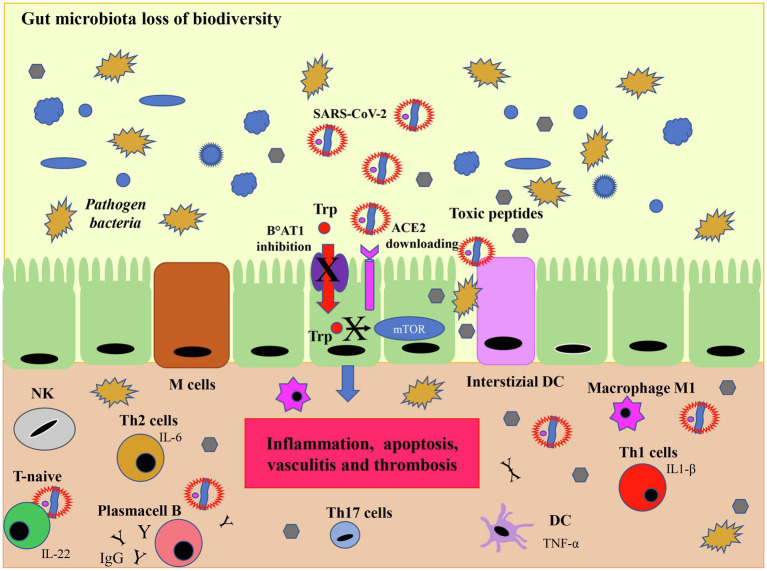Figure 7.
SARS-CoV-2 infection and microbiota. Although the viral mechanism of action in microbiota is not fully understood, the downregulation of ACE2 induced by SARS-CoV-2 infection limits the activity of the mammalian target of rapamycin (mTOR) pathway by reducing the absorption of tryptophan. This process results in a reduced secretion of the AMP which in turn, due to the loss of immunological tolerance, leads to dysbiosis, i.e., a reduced biodiversity of eubacteria and an increase in pathogenic bacteria which release toxic peptides. In this dysbiotic environment the production of IL-17 and IL-22, induce the differentiation of Th1 and Th17 cells which release pro-inflammatory cytokines. In this case, interstitial dendritic cells (DC) and gut specialized M cells produce inflammatory cytokines, such as TNF-α which transform T naïve cells into IL-1β secreting T cells (Th1) and in IL-17 producing T cells (Th17) mediating the inflammatory response with activation of inflammatory macrophages M1. T helper 2 stimulate B cells to produce IgG and IgA. The downregulation of ACE2 leads to a series of negative cascade effects including an increased inflammation resulting in damage to the tight junctions of the intestinal barrier, apoptosis, vasculitis and thrombosis. Modified from Geuking et al. (2014).

